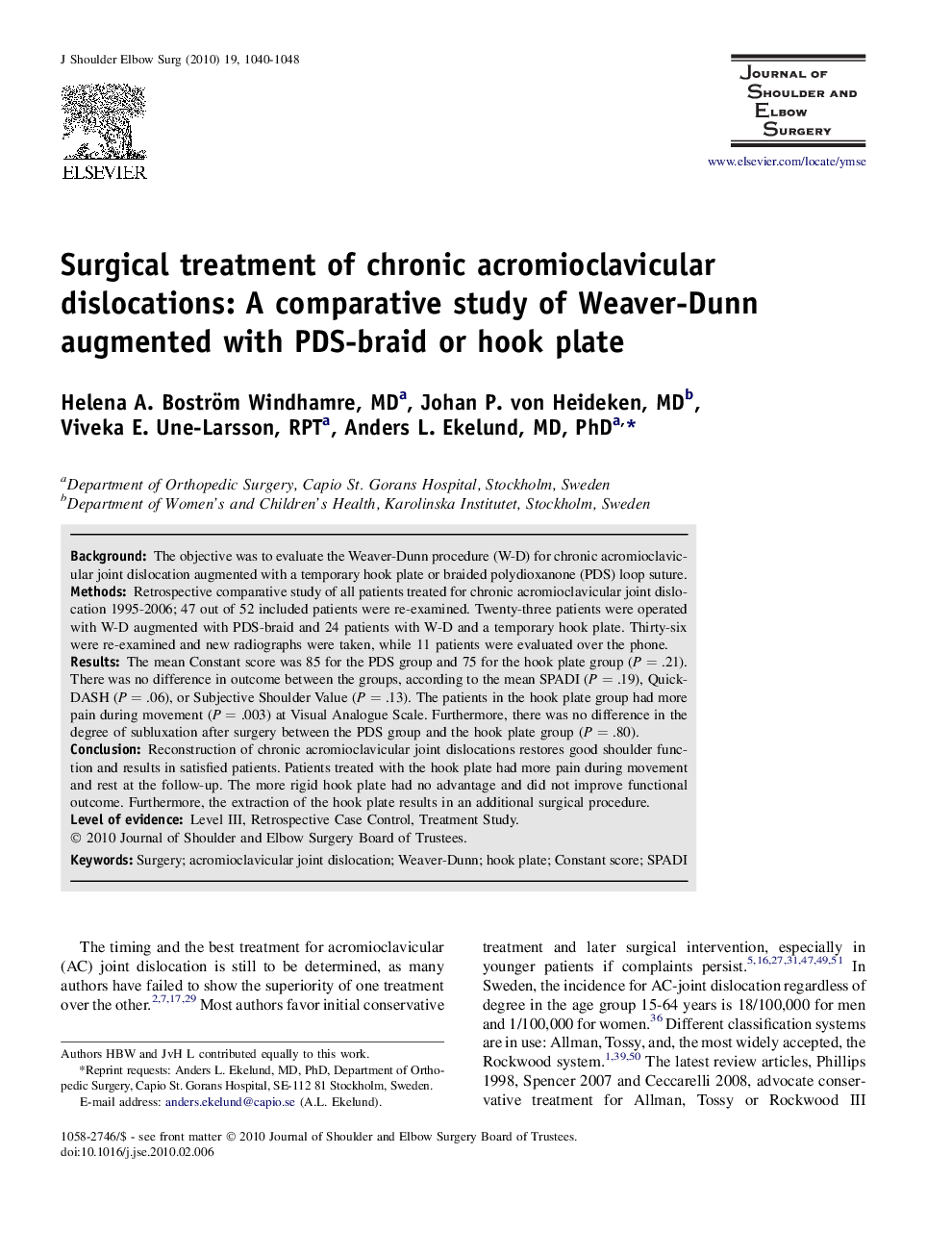| Article ID | Journal | Published Year | Pages | File Type |
|---|---|---|---|---|
| 4074661 | Journal of Shoulder and Elbow Surgery | 2010 | 9 Pages |
BackgroundThe objective was to evaluate the Weaver-Dunn procedure (W-D) for chronic acromioclavicular joint dislocation augmented with a temporary hook plate or braided polydioxanone (PDS) loop suture.MethodsRetrospective comparative study of all patients treated for chronic acromioclavicular joint dislocation 1995-2006; 47 out of 52 included patients were re-examined. Twenty-three patients were operated with W-D augmented with PDS-braid and 24 patients with W-D and a temporary hook plate. Thirty-six were re-examined and new radiographs were taken, while 11 patients were evaluated over the phone.ResultsThe mean Constant score was 85 for the PDS group and 75 for the hook plate group (P = .21). There was no difference in outcome between the groups, according to the mean SPADI (P = .19), QuickDASH (P = .06), or Subjective Shoulder Value (P = .13). The patients in the hook plate group had more pain during movement (P = .003) at Visual Analogue Scale. Furthermore, there was no difference in the degree of subluxation after surgery between the PDS group and the hook plate group (P = .80).ConclusionReconstruction of chronic acromioclavicular joint dislocations restores good shoulder function and results in satisfied patients. Patients treated with the hook plate had more pain during movement and rest at the follow-up. The more rigid hook plate had no advantage and did not improve functional outcome. Furthermore, the extraction of the hook plate results in an additional surgical procedure.
